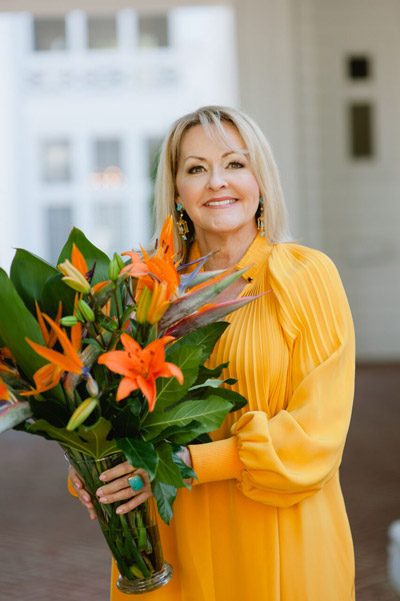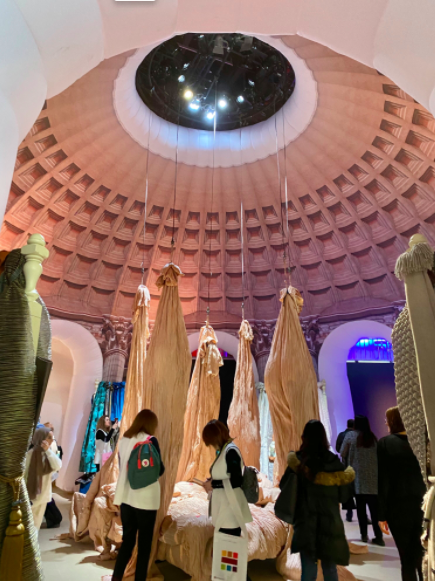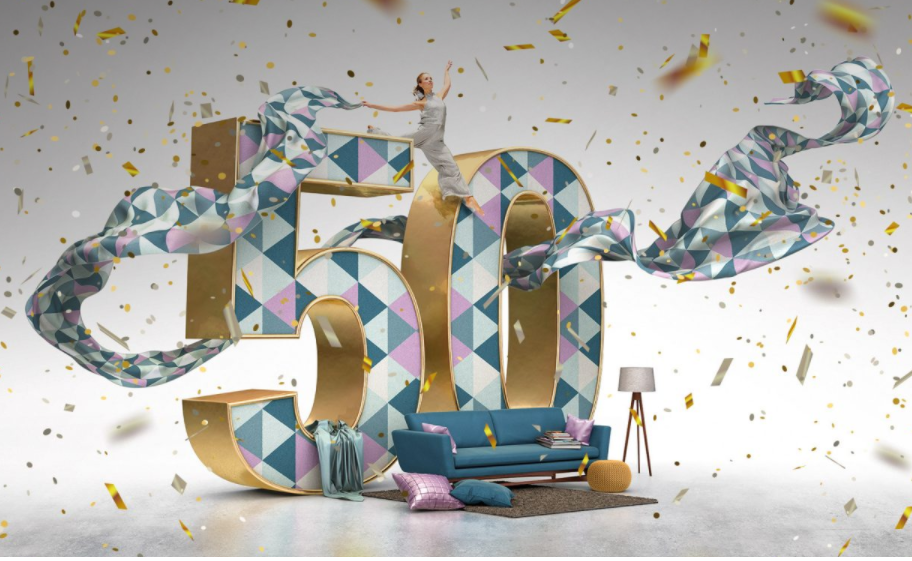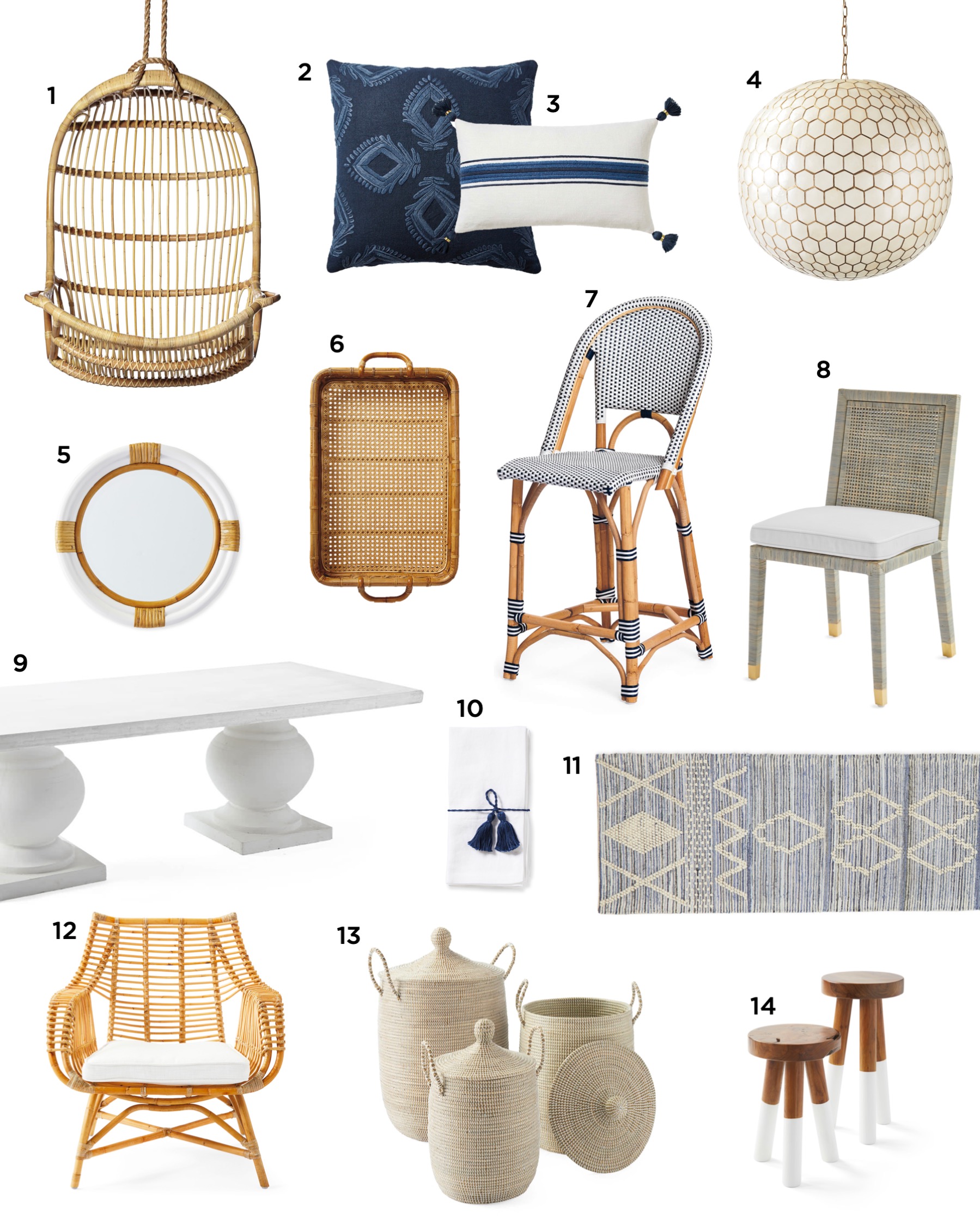I had the good fortune of seeing this room at the Architectural Digest Show House while in Paris. This room utilized two Pierre Frey Fabrics.
My favorite part of the day spent with the Frey Family was getting a tour of the extensive antique archival textile collection Patrick Frey has spent years building. Patrick Frey is passionate about preserving the past and has built a library with over 30,000 textile designs, carpets samples and fabrics, some dating back as far at the 16th century. He uses fabrics from his archives as inspiration for many of the new fabric collections released each year. The archives are so inspiring, and the Frey Family is very generous in sharing it with others, who yearn to study the collection. I would love to revisit Paris one day with the soul intent of spending time at Pierre Frey to study the collection of antique textiles.
Archivist, Sophie Ruart, is the curator of the Pierre Frey archives. Adorned in white cotton gloves, Sophie wowed us with her knowledge of the beautiful silks, embroideries, toiles in the vast collection of antique textiles. It’s easy to see where the Pierre Frey Brand draws inspiration when you view the collection. Vibrant fabrics to soft, elegant silks, all of which are synonymous with the Frey brand, are in abundance. Many times the inspiration for new fabrics come directly from the archival specimens, while other times the antique fabric designs are adapted to appeal to modern tastes in pattern and color. There are many original Pierre Frey fabrics stored in the archives as well. The rest of the inventory came from auctions. It was interesting to hear Sophie talk about what she looks for at auctions, compared to what Patrick Frey is scouting out. The curator looks for rare fabrics to complete the collection while the businessman looks for fabrics to reproduced for new collections. My guess is a combination of Sophie and Patrick’s desires at auction is what has produced such an interestingly beautiful and well rounded collection.
The archival room isn’t enormous in size but has ample storage with flat drawer cabinets surrounding the walls. The flat drawers hold many layers of fabrics separated by archival tissue paper. Each specimen is preserved and catalogued by pattern, fabric content and age. The archives are used by the company’s internal designers as well as special clients and projects which demanding custom fabric design.
On one end of the room is a collection of antique fabric books, with page after page of textile samples, in surprisingly good shape considering the age of the books.
Sophie said no one knows what these books were for, but one theory is that the books belonged to an upholsterer, who in that time, would use them for clients to choose fabrics for bedding, upholstery and other furnishings .
The surface of the brown leather book was aged leather with brass edges and leather straps that fastened around the book to secure its closure. Sophie removed the book from the shelf and began to open it. I could feel everyone in the room hold their breath and tense up, as she unbuckled the book. This was one of the oldest books in the collection. The worn exterior of the book did not hint at the beauty we would experience once the book was open.
The fabrics were either small strips or scraps. Sophie said these were too small to show the full pattern repeat, making it difficult to reproduce the exact pattern, but the book serves as an marvelous example of color and design inspiration.
Pierre Frey is a master at replicating historic materials. Sophie showed us fabrics reproduced for Marie Antoinette’s bedroom inPetit Trianon Palace at Versailles. The original fabric was printed with a wooden block, but the reproduction fabric utilized modern techniques with dots incorporated to make it look as though it had been printed like the original. The result was a fabric that looked much like the 19th-century fabric, but was much wider than the original hand blocked fabric. That attention to detail is what sets Pierre Frey apart from others in the industry.








 By
By